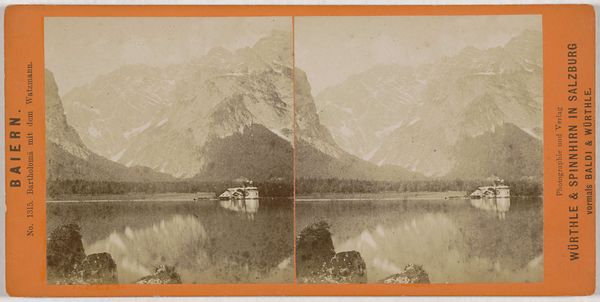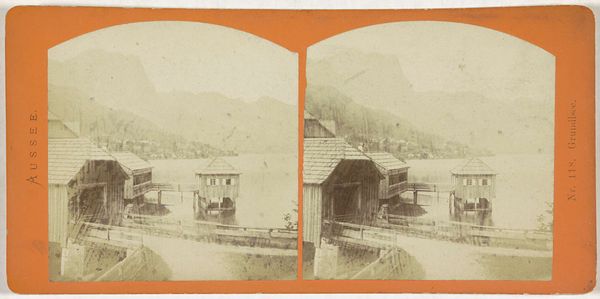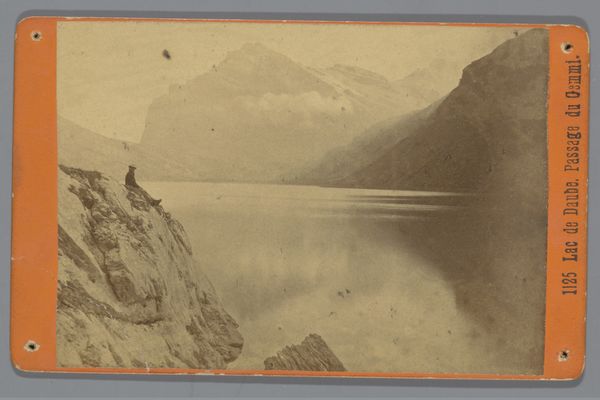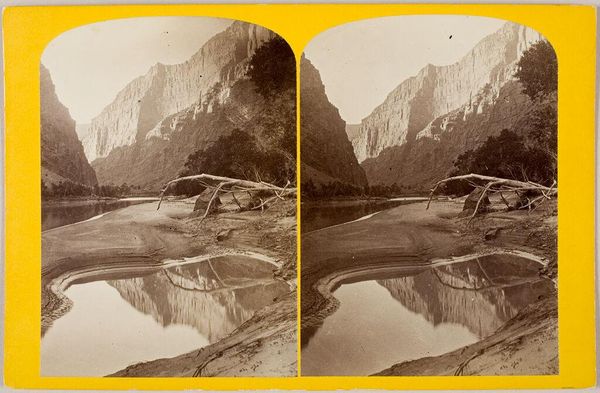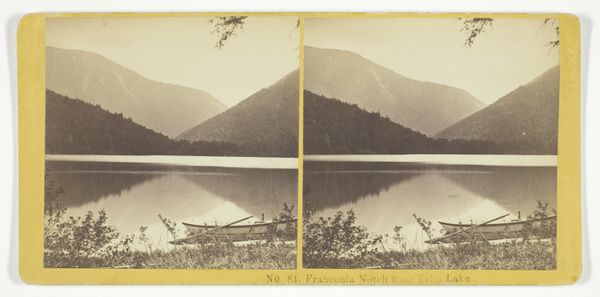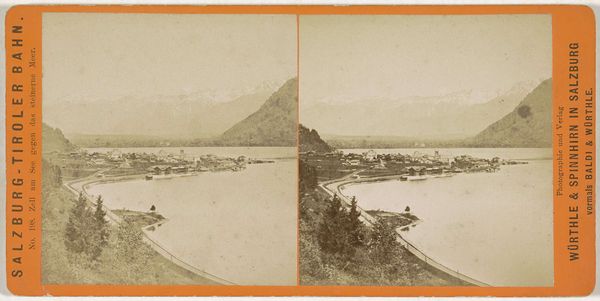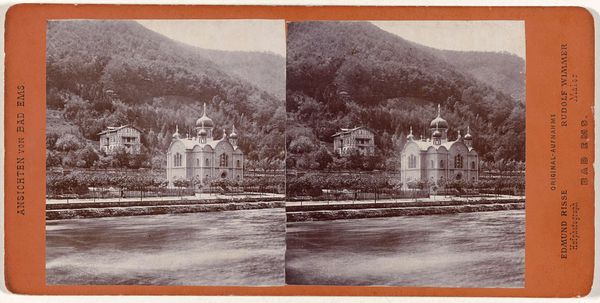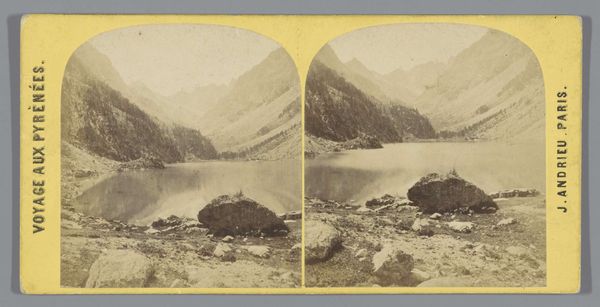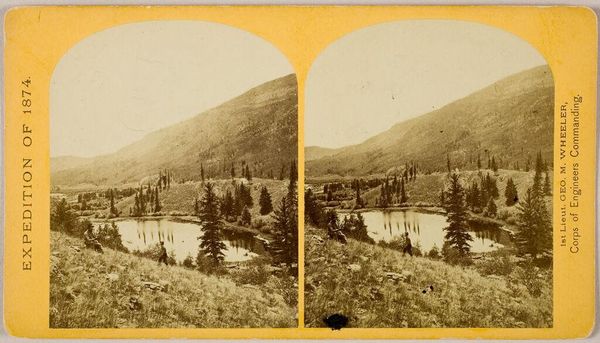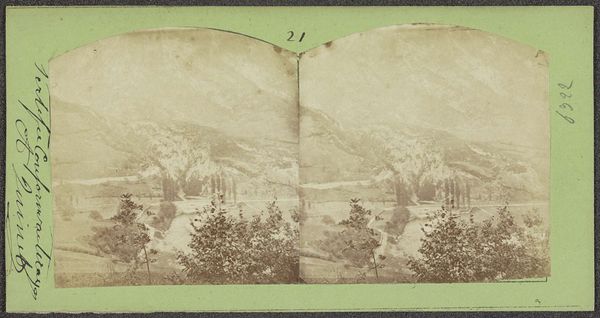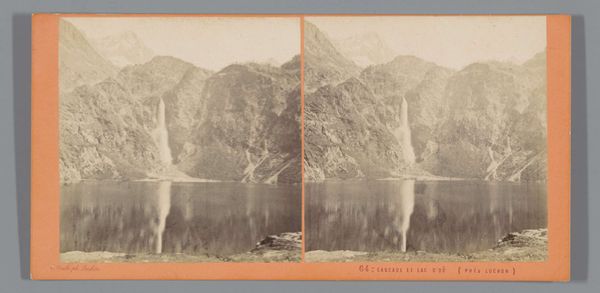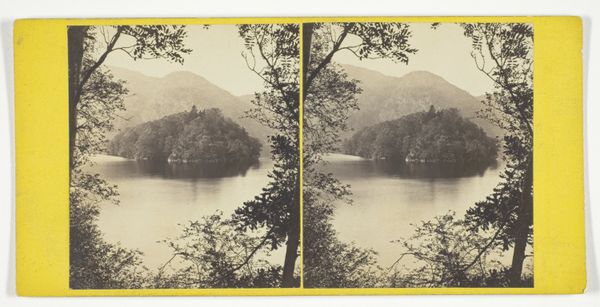
Dimensions: height 88 mm, width 178 mm
Copyright: Rijks Museum: Open Domain
Curator: This print is titled "Slot Ort aan de Traunsee bij Gmunden" created sometime between 1862 and 1880 by Baldi & Würthle. What strikes you initially? Editor: The stillness, definitely the stillness. The almost sepia tones add to that feeling of quietude. There’s a central building – some kind of Schloss, maybe? – perfectly mirrored in the water. It feels deliberately composed. Curator: Precisely, this piece is a photographic print capturing Schloss Ort on the Traunsee lake in Austria. Given its creation period, it exemplifies Romanticism’s visual motifs during photography’s early growth as a commercial medium. Editor: As a photographic print – probably an albumen print based on the tones – I’m thinking about the labor that goes into preparing the glass plates, sensitizing them… that whole process must have been quite intense, even before we consider the difficulties of transporting materials to the lakeside. Curator: Exactly. And consider the cultural factors. Landscape photography was booming, fueled by burgeoning tourism and a romanticized view of nature. Pieces like this were marketed to a public eager to possess scenic mementos, shaping perceptions and solidifying Austria's idealized image. Editor: Right, the finished print disguises the whole, messy industrial reality of making this reproducible image. What we see here is pure, marketable beauty; we have to work a bit harder to imagine the manufacturing, the distribution, the specific labor of women hired to albumenize, and all that hidden from our sight here. Curator: The success of these prints relies on constructed picturesque elements; even small aesthetic touches were leveraged to promote specific social or cultural views of leisure and wealth tied up in accessing that view. The sublime quality comes through artful framing and the manipulation of tonal ranges. Editor: Still, it works, doesn't it? Even today, the skill with which they used light and shadow evokes this palpable mood – an almost melancholy beauty, even acknowledging its place as a commodity object tied up in tourism! Curator: It’s a testament to their ability to reconcile technological demands with an idealized romanticism. Viewing it with an understanding of history alongside production invites deeper perspectives of its role within culture, then and now. Editor: It adds layers – thinking about those industrial processes really enhances my engagement with the final product, prompting considerations that wouldn't otherwise cross my mind. Thank you.
Comments
No comments
Be the first to comment and join the conversation on the ultimate creative platform.
